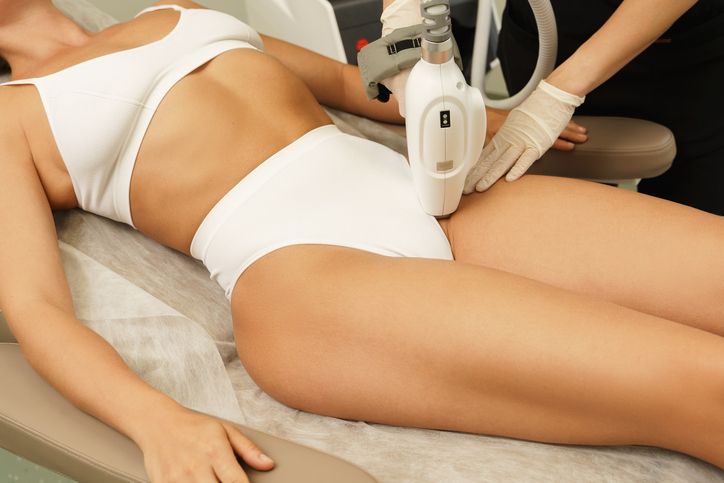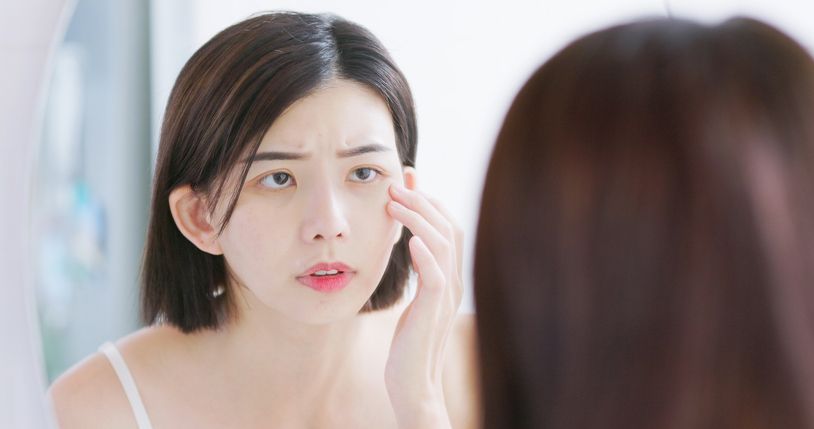- Home
- Trend
- Weight Loss Strategies
- Acne Tips
- Hair Health Information
- Blemish Removal Tips
- Acne Scar Removal Tips
- Muscle Building Techniques
- Intimate Care Tips
- Postpartum Intimate Care
- Eye Bags Wiki
- Tips for Face Slimming
- Secret of Permanent Hair Removal
- Breast Enlargement Tips
- Cure to Snoring
- Marionette Lines
- Skin-Tightening Secrets

免費體驗
S6 Body Sculpting Treatment
1 Minute Self-Registration
Date should not be before minimal date
Thigh fat is a common concern for many people, especially women. It can be frustrating and challenging to deal with stubborn fat in the thigh area. In this article, we will explore the causes of thigh fat, its impact on health, and practical tips to reduce it.
1
Before Starting Weight Loss Journey to Lose Thigh Fat: Understand Your Thighs
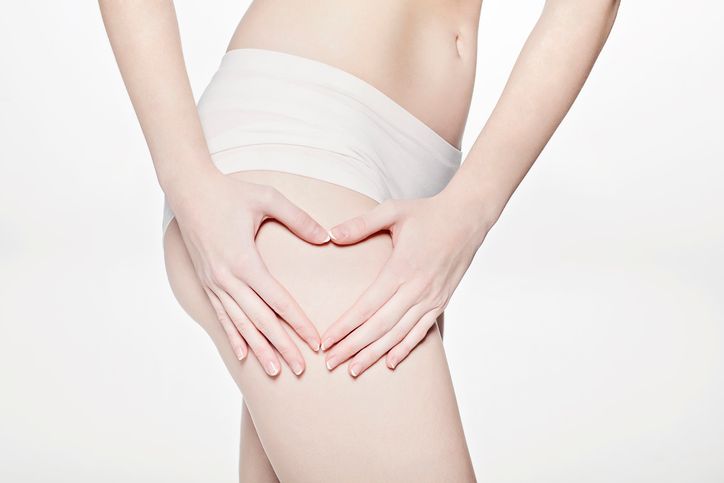
Thigh fat refers to the accumulation of excess adipose tissue in the thighs, particularly in the inner and outer areas. It is a type of subcutaneous fat, which means it lies just beneath the skin. While some amount of fat in the body is essential for insulation and energy storage, excessive thigh fat can lead to various health issues.
Inner Thigh Fat
Inner thigh fat, situated on the innermost region of the thighs, is often a concern for individuals seeking to improve their lower body aesthetics. This type of fat accumulation can result from a combination of genetic predisposition, hormonal fluctuations, and overall body composition.
Outer Thigh Fat
Outer thigh fat, often referred to as "saddlebags," accumulates on the sides of the thighs. Genetic factors and hormonal influences play a role in the storage of fat in this area.
2
Causes of Thigh Fat
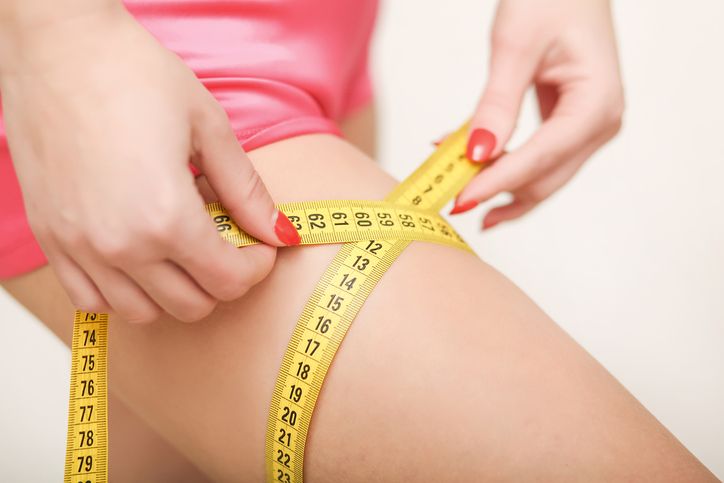
1. Dietary habits
The type of food we consume plays a crucial role in our overall health and body composition. A diet that is rich in calories, saturated fats, and sugary foods can contribute to weight gain, which can manifest as excess fat in various areas of the body, including the thighs. These types of foods are often energy-dense and may lead to an imbalance between calorie intake and expenditure, promoting fat storage in the body.
2. Lack of physical activity
Modern lifestyles often involve prolonged periods of sitting and limited physical movement. This sedentary behaviour can hinder the body's ability to burn calories effectively. Regular physical activity is essential for maintaining a healthy metabolism and promoting the breakdown of fat stores. When physical activity is insufficient, the body may store excess calories as fat, and this storage can be particularly noticeable in the thigh area.
3. Hormonal changes
Hormones play a significant role in regulating various bodily functions, including metabolism and fat distribution. Hormonal imbalances, more commonly observed in women, can affect how fat is distributed throughout the body. Oestrogen, for instance, influences fat storage patterns, and fluctuations in oestrogen levels can lead to an increased accumulation of fat in specific areas such as the thighs.
4. Genetics
Genetics can influence our body's natural tendencies when it comes to storing and distributing fat. Some individuals may have genetic predispositions that make them more likely to accumulate fat in certain regions, including the thighs. While genetics do play a role, lifestyle factors such as diet and exercise can still exert a significant influence on overall body composition.
5. Age
Ageing is associated with changes in metabolism and body composition. As we get older, our metabolic rate tends to decrease, meaning that we burn fewer calories at rest. This metabolic slowdown can contribute to weight gain if dietary habits and activity levels remain unchanged. Additionally, hormonal shifts that occur with age can impact fat distribution, leading to the storage of fat in areas like the thighs.
In summary, the accumulation of fat in the thighs can be attributed to a combination of factors, including diet, physical activity levels, hormonal influences, genetics, and the natural ageing process. Understanding these factors can help individuals make informed choices about their lifestyle to manage weight and body composition effectively.
- 14 Green Tea Benefits for Skin Beauty, Weight Loss and Overall Health
- Is Your DNA Holding You Back from Weight Loss? Discover How Genetics Play a Crucial Role in Body Fat and Metabolism
- Get Rid of Body Fat With Ease By Understanding How Metabolism Works
- Rapid Fat Loss! Are You Suitable for Weight Loss Injections? 5 Must-Know Facts for Easy, Safe, Impressive Slimming Effects!
3
The Impact of Thigh Fat on Health
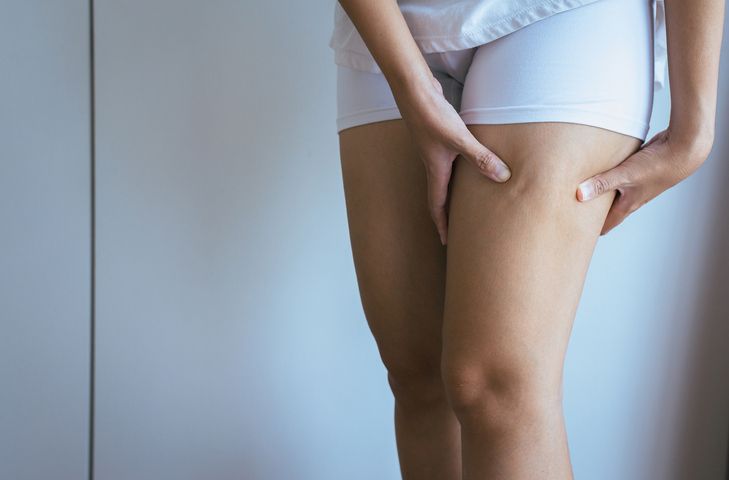
The accumulation of excessive fat in the thigh region can give rise to a range of significant implications that affect one's overall health and well-being:
1. Increased risk of diseases
The presence of surplus fat in the thighs is closely linked to a heightened susceptibility to a variety of chronic ailments. Notably, conditions of considerable concern, such as heart disease, diabetes, and certain types of cancer, are more likely to develop in individuals harbouring excess thigh fat. This association stems from the intricate interplay between the fat stored in the thighs and its impact on metabolic processes, inflammation, and hormonal regulation within the body. Consequently, those with an elevated amount of thigh fat are confronted with an augmented risk of encountering these serious health issues.
2. Joint stress
The repercussions of carrying surplus weight in the thigh area extend beyond the sphere of internal health. The additional burden placed upon the knee and hip joints due to the presence of excess fat can precipitate an increased level of stress on these pivotal joint structures. The cumulative effect of this strain manifests as discomfort, diminished joint functionality, and restricted mobility. Over time, the continuous pressure exerted on these weight-bearing joints can contribute to the progression of joint-related problems, thereby impeding one's ability to engage in physical activities and daily tasks without hindrance.
3. Body image concerns
Beyond the physical ramifications, the implications of excessive thigh fat extend into the realm of mental and emotional well-being. Individuals grappling with noticeable thigh fat may experience a pronounced impact on their body image perception. This heightened self-awareness can lead to feelings of dissatisfaction with one's appearance, resulting in a decrease in self-confidence and a surge in psychological distress. Such sentiments are capable of influencing various aspects of life, including social interactions, emotional stability, and overall quality of life.
The presence of excessive fat in the thighs goes beyond aesthetic concerns, as it intertwines with an array of health implications. These encompass an elevated susceptibility to serious diseases, the imposition of strain on key joints, and the potential erosion of self-esteem due to body image concerns. Recognizing these multifaceted consequences underscores the significance of maintaining a healthy body composition and weight distribution for both physical and psychological well-being.
4
What Can You Try on Losing Thigh Fat: Part by Part
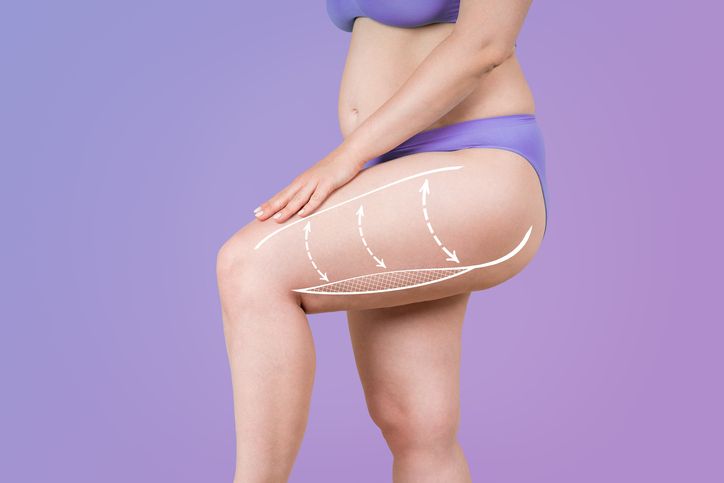
The distinction between inner thigh and outer thigh fat lies in their locations on the body and the underlying causes of their accumulation. Effective strategies for reducing each type of thigh fat can differ due to the unique characteristics of these areas:
Effective ways to reduce inner thigh fat
1. Cardiovascular Exercise: Incorporating regular cardiovascular exercises into your routine can be instrumental in shedding excess fat, including that in the inner thigh area. Activities like running, cycling, and swimming elevate your heart rate, prompting the body to tap into its fat stores for energy.
2. Strength Training: Targeted strength training exercises that engage the inner thigh muscles can help in toning and sculpting the area. Movements like leg lifts, inner thigh squeezes, and wide-legged squats can be effective.
3. Balanced Diet: A diet rich in whole foods, lean proteins, and nutrient-dense vegetables supports overall fat loss, including from the inner thighs. Reducing your overall caloric intake, while maintaining proper nutrition, is key.
4. Hydration: Staying adequately hydrated not only supports your body's functions but can also aid in optimising your metabolism, potentially aiding in fat loss.
5. Stretching and Flexibility: Regular stretching not only contributes to flexibility but can also help shape and define the muscles in the inner thigh area. Incorporate stretches like butterfly stretches and lunges into your routine.
Effective ways to reduce outer thigh fat
1. Cardiovascular Exercise: Similar to addressing inner thigh fat, cardiovascular workouts play a pivotal role in overall fat reduction, including from the outer thighs. Activities like jogging, stair climbing, and aerobic classes can help target this area.
2. Targeted Strength Training: Specific strength training exercises that focus on the outer thigh muscles are beneficial. Incorporate lateral leg raises, side lunges, and resistance band exercises to engage and tone these muscles.
3. Nutrition and Caloric Deficit: Prioritise a well-balanced diet that promotes a caloric deficit, meaning you're consuming fewer calories than your body expends. This encourages the body to utilise stored fat for energy.
4. Incorporate Resistance: Utilise resistance bands or weights during your workouts to intensify the engagement of outer thigh muscles and contribute to their firmness.
5. Consistency and Patience: Long-term commitment is essential for effective fat loss. Consistently follow your exercise regimen and nutritional plan, understanding that results may take time.
In both cases, remember that achieving fat reduction involves a comprehensive approach that includes physical activity, dietary adjustments, and a mindful lifestyle. While spot reduction is challenging, adopting these strategies can contribute to noticeable improvements in the appearance and overall health of your inner and outer thighs over time.

免費體驗
S6 Body Sculpting Treatment
1 Minute Self-Registration
Date should not be before minimal date
5
Lose Weight and Thigh Fat with Perfect Medical's S6 Body Sculpting Treatment
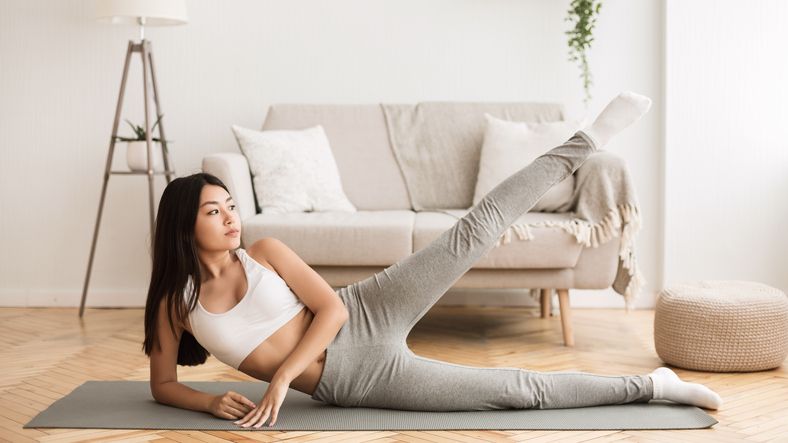
For those seeking a seamless journey towards weight loss without relinquishing the pleasures of life, the innovative S6 Body Sculpting Treatment by Perfect Medical offers an ideal solution. Introducing an entirely fresh approach to fat reduction, this treatment harnesses the power of an exclusive, advanced non-invasive bio-laser technology machine. This technology serves as a catalyst for the breakdown of fatty acids, working harmoniously with vacuum suction technology to expedite the body's natural lymphatic processes. Through this synergy, the treatment facilitates the removal and elimination of fat cells, culminating in the attainment of a more alluring body contour.
In tandem with these groundbreaking mechanisms, the treatment employs cutting-edge medical-grade fat reduction equipment. These devices emit bio-laser beams, which in turn emit controlled heat energy. This heat energy plays a pivotal role in the dissolution of fat cells, strategically stimulating collagen production within the innermost layers of the skin. This dual effect not only aids in the tightening of the skin but also acts as a combatant against the presence of cellulite and skin laxity. The cumulative outcome is a natural-looking, slender physique that radiates a sense of vitality and well-being.
In essence, the S6 Body Sculpting Treatment from Perfect Medical redefines the path to weight loss, offering an alternative that harmoniously merges effective fat reduction techniques with the ability to indulge in enjoyable meals. Through the synergy of non-invasive bio-laser technology and vacuum suction, paired with the transformative effects of collagen stimulation and skin tightening, this treatment presents a holistic solution to achieve an enhanced body silhouette while savouring the pleasures of life.
6
Losing Weight in a Long Run: Build Your Leg Muscles by Doing More Than Physical Exercise
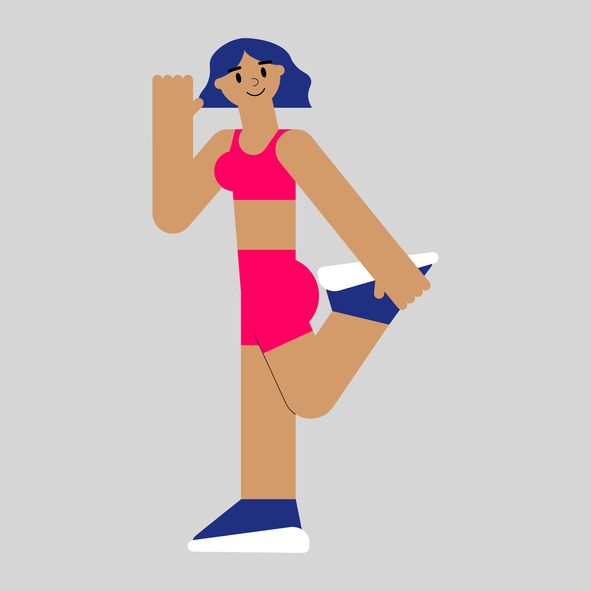
Aside from taking suitable treatment, it's essential to reduce thigh fat by adapting a long-term lifestyle change rather than a quick fix. Many might want to combine treatment with crash diets etc, where these extreme measures may lead to temporary weight loss, but they are not sustainable and can be detrimental to overall health.
In addition to thinking about the right solutions, it's important to look at weight loss and fat loss as a permanent change in lifestyle, not just a temporary fix. Crash diets and other extreme measures might help you lose weight for a short time, but they are not a good idea because they are not sustainable and could hurt your health in the long run.
Meal planning
A smarter way to do things is to do a number of healthy things that add to your overall health. For example, having a healthy, well-balanced meal is a cornerstone. Choose whole foods that are high in important nutrients, such as lean proteins, vegetables with lots of fibre, and whole grains. Using examples like grilled chicken with steamed vegetables or a quinoa salad with lots of fresh fruits and vegetables shows how healthy this kind of food change can be.
Stress relief
Also, it's important to realise the part stress-management techniques play in your journey. Practising mindfulness meditation, doing yoga, or spending time on a hobby are all helpful ways to stop stress-related overeating and develop a positive attitude.
Make small steps
Getting these good habits into your life takes time and effort. Take time to enjoy the smaller steps along the way instead of only focusing on the end goal. This could mean having more energy, working out better than ever before, or feeling more comfortable in your clothes. These kinds of victories are powerful motivators and reinforce the idea that progress is constant and comes in many forms.
7
Conclusion

Thigh fat is a common concern, but with dedication and consistent effort, it is possible to reduce overall body fat, including fat in the thigh area. Embrace a healthy lifestyle that includes a balanced diet, regular exercise, and sufficient rest. Remember that everyone's body is unique, and the journey to achieving your desired goals may vary. Always consult a healthcare professional or a registered dietitian before making significant changes to your diet or exercise routine.

免費體驗
S6 Body Sculpting Treatment
1 Minute Self-Registration
Date should not be before minimal date
FAQ

1. How can I target inner thigh fat while managing my overall body weight?
While the concept of spot reduction—targeting fat loss in specific areas—is challenging, achieving toned inner thighs involves a holistic approach. Focus on creating a calorie deficit through a balanced diet and regular exercise. Incorporating cardiovascular activities like jogging or cycling aids in overall fat reduction, which includes the inner thighs. Combine this with strength training exercises like leg lifts and lunges to sculpt and tone the muscles in that area. Remember that patience and consistency are key, as gradual progress will lead to sustainable results.
2. How does building lean muscle mass affect my thighs?
Building lean muscle mass through strength training introduces a range of benefits to your thighs and overall body composition. Engaging in exercises like squats, lunges, and leg presses not only strengthens the muscles but also contributes to a more toned appearance. Additionally, increased muscle mass raises your resting metabolic rate, allowing you to burn more calories even at rest. As you target the thighs, this can aid in reducing fat over time, contributing to a leaner and more defined look.
3. How important is a calorie deficit for thigh fat reduction?
Creating a calorie deficit is crucial for successful thigh fat reduction. When your body expends more calories than you consume, it begins to tap into stored fat for energy, leading to fat loss. This process is essential for shedding excess fat from various areas, including the thighs. Combining a calorie deficit with exercises that engage the thigh muscles, such as squats and leg raises, maximises the potential for fat reduction in this specific region.
4. What exercises are effective for losing thigh fat?
Effectively losing thigh fat involves a multifaceted exercise regimen. Incorporating cardiovascular exercises like running, cycling, and brisk walking promotes calorie burn and overall fat loss, contributing to slimmer thighs. Complement these with strength training exercises that target the thigh muscles directly, such as inner and outer leg lifts and lunges. A comprehensive approach that combines both types of exercise will provide the best results in reducing thigh fat.
5. How can I increase calorie burn to target thigh fat?
To enhance calorie burn and specifically target thigh fat, consider incorporating high-intensity interval training (HIIT) into your routine. HIIT alternates between short bursts of intense exercise and rest, effectively boosting your metabolism and fat-burning potential. Engaging in regular cardio workouts like jogging, swimming, or cycling also amplifies calorie burn. These activities not only contribute to overall fat loss but also play a significant role in reducing thigh fat over time.






